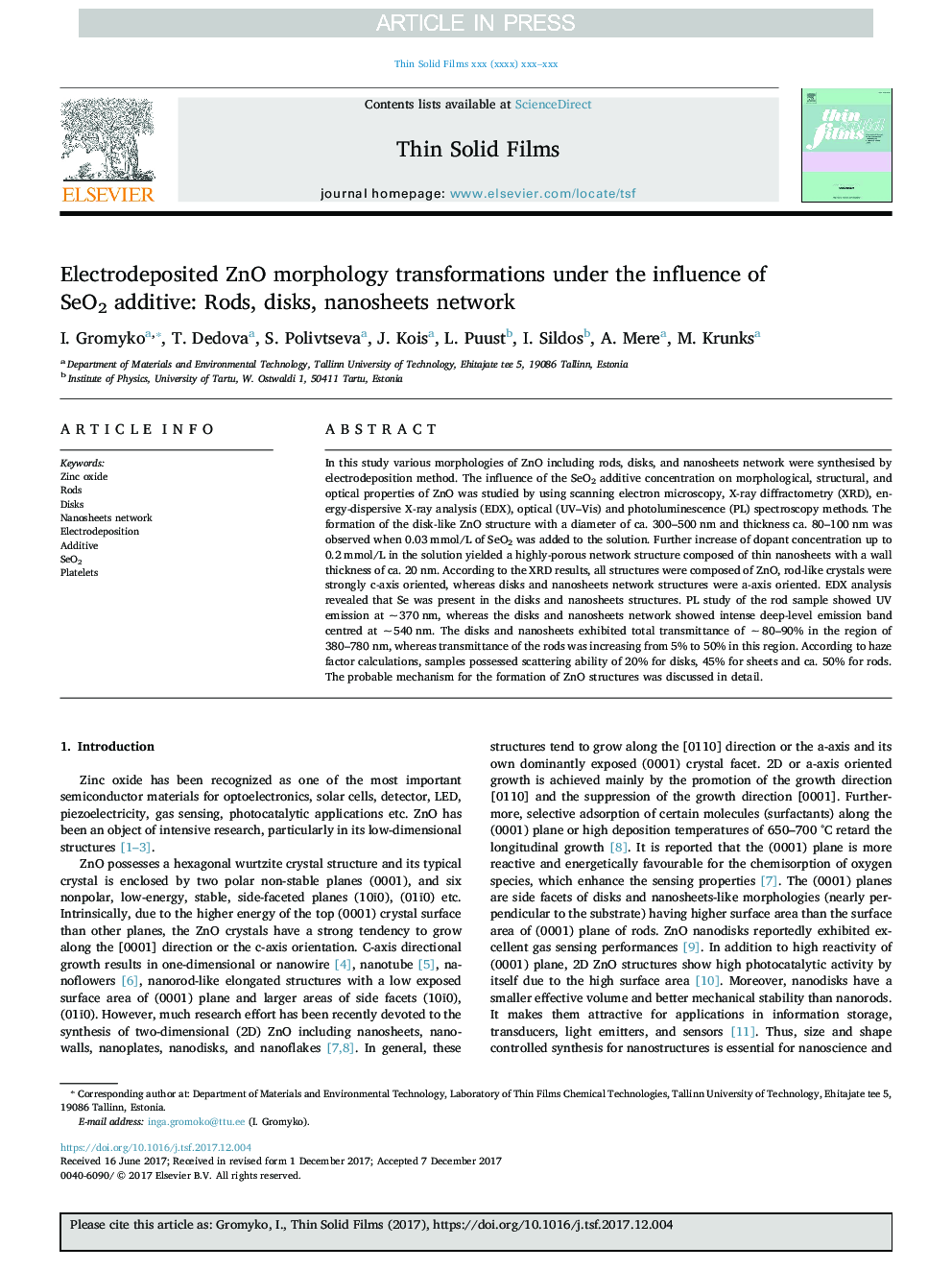| Article ID | Journal | Published Year | Pages | File Type |
|---|---|---|---|---|
| 8032770 | Thin Solid Films | 2018 | 6 Pages |
Abstract
In this study various morphologies of ZnO including rods, disks, and nanosheets network were synthesised by electrodeposition method. The influence of the SeO2 additive concentration on morphological, structural, and optical properties of ZnO was studied by using scanning electron microscopy, X-ray diffractometry (XRD), energy-dispersive X-ray analysis (EDX), optical (UV-Vis) and photoluminescence (PL) spectroscopy methods. The formation of the disk-like ZnO structure with a diameter of ca. 300-500 nm and thickness ca. 80-100 nm was observed when 0.03 mmol/L of SeO2 was added to the solution. Further increase of dopant concentration up to 0.2 mmol/L in the solution yielded a highly-porous network structure composed of thin nanosheets with a wall thickness of ca. 20 nm. According to the XRD results, all structures were composed of ZnO, rod-like crystals were strongly c-axis oriented, whereas disks and nanosheets network structures were a-axis oriented. EDX analysis revealed that Se was present in the disks and nanosheets structures. PL study of the rod sample showed UV emission at ~ 370 nm, whereas the disks and nanosheets network showed intense deep-level emission band centred at ~ 540 nm. The disks and nanosheets exhibited total transmittance of â¼Â 80-90% in the region of 380-780 nm, whereas transmittance of the rods was increasing from 5% to 50% in this region. According to haze factor calculations, samples possessed scattering ability of 20% for disks, 45% for sheets and ca. 50% for rods. The probable mechanism for the formation of ZnO structures was discussed in detail.
Related Topics
Physical Sciences and Engineering
Materials Science
Nanotechnology
Authors
I. Gromyko, T. Dedova, S. Polivtseva, J. Kois, L. Puust, I. Sildos, A. Mere, M. Krunks,
